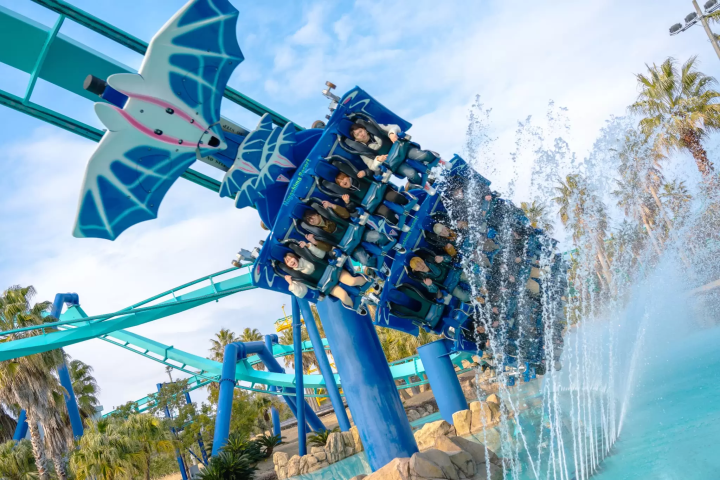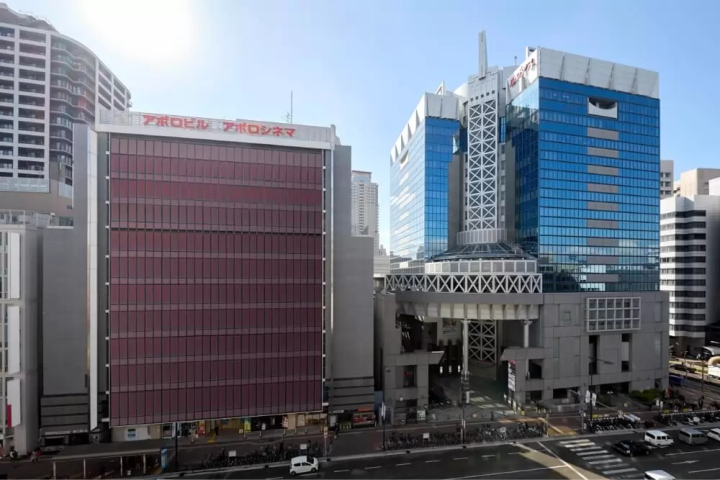[History Walk] What is Okusa Castle, the mythical castle associated with Oda Urakusai, like?
![[History Walk] What is Okusa Castle, the mythical castle associated with Oda Urakusai, like?](https://resources.matcha-jp.com/resize/720x2000/2024/08/08-191675.webp)
Okusa Castle was started by Oda Nagamasu (Yurakusai), the younger brother of Oda Nobunaga, but was abandoned before being completed. It is now maintained as a park, but the remains of the castle can be seen there, allowing you to imagine what it was like in the past. Why not take a stroll through the park and feel the breeze of history for a while?
Historically, the castle is still shrouded in mystery
On the border between Chita City and Tokoname City, on a small hill overlooking Ise Bay, there is a place of relaxation for local residents called Okusa Park. The area centered on this park is known as the ruins of Okusa Castle, a castle from the Azuchi-Momoyama period.
![[History Walk] What is Okusa Castle, the mythical castle associated with Oda Urakusai, like?](https://resources.matcha-jp.com/resize/720x2000/2024/08/08-191678.webp)
This "Okusa Castle" is a castle shrouded in mystery, and it is not clear when and how it was built. The Edo period book "Biyo Zakki", written many years after the castle was built, states that "Okusa Castle was built as a residence for Oda Nobunaga's younger brother, Oda Nagamasu, but just as the civil engineering work was completed, the country fell into turmoil and construction was halted, and the castle was abandoned."
Additionally, the "Chita-gun Okusamura Old Castle Map" owned by Nagoya City's Yoza Bunko depicts the earthworks and moats of Okusa Castle, thought to date from the early Edo period. What is of interest here is a man named Oda Nagamasu, who was the lord of the castle. He later became Urakusai, and was a master of the prestigious samurai tea ceremony, famous for the National Treasure teahouse "Joan" (now moved to Inuyama) that he built at Kenninji Temple in Kyoto. One wonders if they intended to build a teahouse at Okusa Castle as well, but since no building was ever constructed on the castle, even this is a matter of speculation. (It is also unclear when he began to master the art of tea...)
![[History Walk] What is Okusa Castle, the mythical castle associated with Oda Urakusai, like?](https://resources.matcha-jp.com/resize/720x2000/2024/08/08-191679.webp)
However, that is exactly why it is also a castle that history buffs will love. Because you can't see it with your own eyes and don't know the facts, there are many things that become clear when you walk around.
When you imagine a castle from its earthworks and moats,
First of all, what's amazing is that there are remains such as earthworks and moats.
After the castle was abandoned in 1668, Yamazumi, a chief retainer of the Owari clan who had a mansion on the west side of Okusa Castle, restricted entry and cutting of vegetation, which allowed the remains to be preserved throughout the Edo period, and they were also developed into a park by Chita City in 1979, leaving them in good condition. Although alterations have been made to the site, such as converting the moat into an irrigation pond and development, the earthworks and moats that were built to prevent enemy invasions can still be clearly seen.
There are walking paths on the earthworks and along the moats within the park, and it's exciting to walk along them, experiencing the difference in elevation and imagining what kind of castle they wanted to build!
![[History Walk] What is Okusa Castle, the mythical castle associated with Oda Urakusai, like?](https://resources.matcha-jp.com/resize/720x2000/2024/08/08-191684.webp)
This part of the main castle (Kuruwa and Honmaru) is now a playground. It was probably intended to build Oda Nagamasu's residence here. It is a large main castle measuring nearly 100m square, and one can imagine that it must have been a splendid castle worthy of being the castle of Oda Nobunaga's younger brother.
![[History Walk] What is Okusa Castle, the mythical castle associated with Oda Urakusai, like?](https://resources.matcha-jp.com/resize/720x2000/2024/08/08-191686.webp)
By the way, there is a castle tower-style building in the main bailey, but this was built as an observation deck and is not indicative of the original site. However, you can see the ocean from the observation deck, and it is clear that the site was a wonderful place to look out over Ise Bay even back then.
It is likely that people tried to build a castle on a small hill where they could feel the sea close by. It was natural for Nagamasu, who commanded the Ono Navy, to have a base near Ono Port, and it was probably an important strategy for him to firmly control Ise Bay from Okusa Castle.
When the weather is nice, the sunsets are beautiful!
![[History Walk] What is Okusa Castle, the mythical castle associated with Oda Urakusai, like?](https://resources.matcha-jp.com/resize/720x2000/2024/08/08-191687.webp)
You'll enjoy it even more if you know more!
<Check!> The civil engineering techniques of the Chita Kurokuwa-shu may have been used
Currently, the main enclosure (Honmaru), Ninomaru, earthworks, and moats can be seen within the park, but the earthworks surrounding Sannomaru have been demolished and the moat filled in to make way for houses and roads. When part of the earthworks of Sannomaru was excavated, a 40-50cm layer of hard concrete-like material was discovered at the base of the earthworks. The "Kurokuwa-shu" of the Chita Peninsula were said to have excelled in this type of civil engineering technology, so perhaps they were called together here and used their skills. Okusa Castle was defended by earthworks rather than stone walls, so building strong earthworks must have been extremely important in the construction of the castle.
A historical exploration journey where you can walk and solve various mysteries surrounding the castle. It seems that there are still many interesting secrets to be discovered at Okusa Castle!
If you visit Okusa Castle, why not get a "Castle Seal" as a souvenir?
Okusa Castle is a park with no resident manager, so the pass is not distributed on-site, but you can pick one up at the Chita City Tourist Association, Jikoji Temple, or Jomondo Shokai Co., Ltd. (300 yen including tax). Please stop by.
![[History Walk] What is Okusa Castle, the mythical castle associated with Oda Urakusai, like?](https://resources.matcha-jp.com/resize/720x2000/2024/08/08-191688.webp)
![[History Walk] What is Okusa Castle, the mythical castle associated with Oda Urakusai, like?](https://resources.matcha-jp.com/resize/720x2000/2024/08/08-191689.webp)
●Access by train
About 10 minutes walk from Meitetsu "Oonomachi Station"
Access by car
From Nagoya, head south on Nishi-Chita Industrial Road (R155), about 3 minutes from Asahi Minami 5-chome
Saburi is fragrant with plum blossoms, Okada is steeped in 400 years of history, and Shinmaiko is a mecca for marine leisure. Take a leisurely stroll through Chita City, which is rich in nature and has peaceful scenery. We hope you have a wonderful trip and discover the charms of Chita City.
The contents on this page may partially contain automatic translation.

































![[50 minutes by car from Nagoya] Experience "sake and culture" in Tokoname](https://resources.matcha-jp.com/resize/720x2000/2026/01/13-255411.webp)


